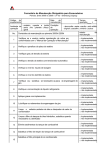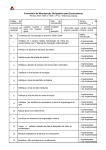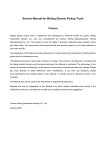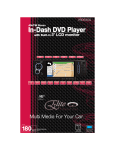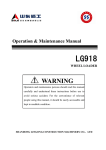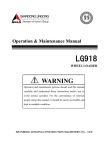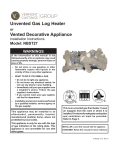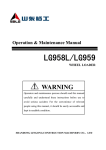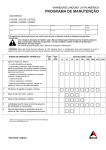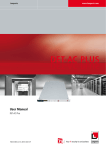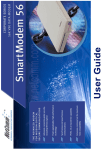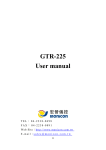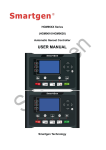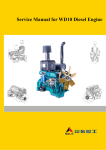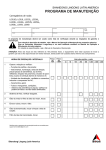Download Service Manual Maintenance of Wheel Loader Electrical
Transcript
Service Manual Maintenance of Wheel Loader Electrical Equipment SHANDONG LINGONG CONSTRUCTION MACHINERY CO., LTD Maintenance Manual of Loader Electrical Equipment Maintenance of Wheel Loader Electrical Equipment SHANDONG LINGONG CONSTRUCTION MACHINERY CO.,LTD Address: Lingong Industry Park, Linyi Economic Development Zone, Shandong, china Tel:+86 539 8785597 Fax: +86 539 8785618 Email: [email protected] Website: http://www.sdlg.cn 2 Maintenance Manual of Loader Electrical Equipment Service Manual Concise Guide All reasonable steps have been taken to ensure that this publication is correct and complete, but should any user be in doubt about any detail, clarification may be sought from Shandong Lingong construction machinery Co. Ltd. or their accredited representative. The information in this document is subject to change without notice and should not be construed as commitment by Shandong Lingong construction machinery Co. Ltd. Shandong Lingong construction machinery Co. Ltd accepts no responsibility for any errors that may appear in this document. Shandong Lingong construction machinery Co. Ltd, P. R. China All rights reserved. The contents of this publication may not be reproduced in any form, or communicated to a third part without prior written permission of Shandong Lingong construction machinery Co. Ltd. 3 Maintenance Manual of Loader Electrical Equipment CHAPTER Ⅰ POINTS FOR ATTENTION AND BASIC INFORMATION IN MAINTENANCE OF LOADER ELETRICAL EQUIPMENT·······················································6 1.1 Operating specification and points for attention in maintenance of electrical system ········6 1.2 The using method of digital multimeter ············································································8 1.3 The basic circuit knowledge of engineering machinery·····················································9 1.4 Points for attention and marginal data in maintenance of electrical appliance ·················12 CHAPTER Ⅱ THE PRINCIPLE OF POWER SYSTEM···························································27 2.1 The explanation of principle ···························································································27 2.2 The introduction of main components·············································································29 2.2.1 Electric lock ·········································································································29 2.2.2 Fuse······················································································································30 2.2.3 Relay····················································································································31 2.2.3.1 Intermediate relay (JD2914) ······································································31 2.2.3.2 Battery relay ······························································································32 2.2.3.3 Starting relay and flameout relay ·······························································33 2.2.4 Flameout electromagnet (only part of vehicle type)··············································34 2.2.5 Generator ·············································································································35 2.2.5.1 The principle of generator··········································································35 2.2.5.2 The connection method of Weichai generator used in LG953 ····················37 2.2.5.3 The method to judge whether the generator generates electricity normally and treatment measures ·························································································37 2.2.6 Starting motor ······································································································38 2.2.7 Storage battery ·····································································································41 2.2.8 Power switch········································································································42 2.3 Example for maintenance of system common faults ·······················································43 2.3.1 Maintenance of power system common faults——Whole vehicle no electric ······43 2.3.2 Maintenance of power system common faults——Turn off electric lock, but engine doesn’t stop and whole vehicle still has electricity·············································44 2.3.3 Maintenance of power system common faults——10A electric fuse is burn down frequently······················································································································44 2.3.4 Analysis for fault in starting whole vehicle···························································44 CHAPTER Ⅲ INSTRUMENT SYSTEM ··················································································46 3.1 Schematic diagram of instrument system ········································································46 3.2 Explanation of main parts ·······························································································46 3.2.1 Instrument panel assembly ···················································································46 3.2.2 Temperature sensor ······························································································47 3.2.3 Braking barometer································································································47 3.2.4 Fuel level sensor···································································································48 3.2.5 Alarm-pressure switch··························································································48 3.3 Example for maintenance of system common faults ·······················································48 3.3.1 Abnormal indication of thermometer····································································48 3.3.2 Abnormal indication of fuel level ·········································································48 CHAPTER Ⅳ AUTOMATIC RESET SYSTEM········································································50 4.1 Schematic diagram··········································································································50 4 Maintenance Manual of Loader Electrical Equipment 4.2 Explanation of system function·······················································································50 4.3 Maintenance of system fault ···························································································52 CHAPTER Ⅴ LIGHTING SYSTEM·························································································53 5.1 Circuit of front combination lamp ···················································································53 5.1.1 Schematic diagram ·······························································································53 5.1.2 Explanation of principle ·······················································································53 5.1.3 Maintenance of system common fault—the headlight doesn’t light······················53 5.2 Circuit of work light, taillight and interior trimming light···············································54 5.3 Circuit of steering light ···································································································55 5.4 Circuit of lamplet ············································································································56 5.5 Circuit of brake light·······································································································57 CHAPTER Ⅵ BACKING VEHICLE ALARMING SYSTEM ··················································59 6.1 Explanation of principle··································································································59 6.2 Analysis of common fault ·······························································································59 CHAPTER Ⅶ WIPER AND CLEANER SYSTEM ···································································60 7.1 Explanation of principle··································································································60 7.2 Maintenance of common fault·························································································61 7.2.1 Wiper motor doesn’t work····················································································61 7.2.2 Nozzle doesn’t spray water···················································································61 CHAPTER Ⅷ ELECTRIC HORN SYSTEM·············································································62 8.1 Schematic diagram··········································································································62 8.2 Maintenance of common fault·························································································62 CHAPTER Ⅸ STANDBY SOCKET SYSTEM ·········································································63 9.1 Explanation of principle··································································································63 9.2 Maintenance of common fault·························································································64 5 Maintenance Manual of Loader Electrical Equipment CHAPTER Ⅰ POINTS FOR ATTENTION AND BASIC INFORMATION IN MAINTENANCE OF LOADER ELETRICAL EQUIPMENT The content of this manual is compiled on the basis of the condition of product production, and every product is in incessant improvement and protection. So the manual has different vision. Please repair and maintain strictly observe the maintenance and service manual which are obtained from the Lingong distributor when buying loader. To repair the loader in correct method is very important to use it safely and reliably. The basic maintenance methods listed in the manual are all based on the electrical appliance diagrams, so please understand the principle diagrams deeply before repairing. Make sure understand and remember the information of safety, warning and points for attention before maintenance, otherwise your loader will be damaged. The manual has mistakes inevitably because of the limitation of editor. Criticism from every user and maintenance personnel is warmly expected. 1.1 Operating specification and points for attention in maintenance of electrical system When repair the loader electrical system, please obey the following points strictly. Otherwise small fault will become great accident to lead to greater economic loss. When repairing, please disconnect the power of main engine before disconnecting the connection between conductor and connector, otherwise the wiring harness will be damaged and the fuse will be fused, even the fire will occur due to the short circuit of conductor. Identify the signal of conductor correctly. Each conductor on the wiring harness corresponds to a signal with single or double figures. Please distinguish between “3” and “8”, “6” and “9”, “5” and “6”, “0” and “8”, “1” and “7” and etc. to avoiding taking trouble. Connect the connector: When connecting the connectors (especially for the collect connectors), please watch the letters and figures on connector carefully (such as CN-1A, CN2-B and etc.) to avoid connecting by mistake. Connect the connectors 6 Maintenance Manual of Loader Electrical Equipment by mistake will lead to unexpectable fault from fuse fused to fire of whole machine. When unplug the connector, please hand the body of connector and push the lock catch of connector to separate to two directions, and grasp the conductor to unplug directly is not allowed. When connect the connector, make sure watch the connector whether it is locked, otherwise, please connect again until the lock catch is locked. When maintaining the connectors of waterproof, water mustn’t enter into the inside of connector, otherwise, connect again after drying. Use circuit detecting instrument correctly: 1. When using each circuit detecting instrument, firstly understand the working principle and using condition, prohibit using improperly. 2. When measuring voltage and electric current, select proper measuring range to avoid destroying the instrument. 3. Prohibit measuring voltage in the position of electric current and resistance. Understand the circuit principle diagram: The principle diagram is the relationship diagram of each component in the electrical system when they are working normally. Understand the function of each component in circuit and the effect of occurring fault until you spell over the principle diagram, so judge the fault phenomenon correctly and quickly. Avoid disassembling blindly to save maintenance time. Understand the meaning of “ground” correctly: The negative electrode of storage battery is “ground”. Negative electrode ground is often employed in construction machinery, that is to say, connect the negative electrode of storage battery on the body of complete appliance (including the metallic conductor connecting frame with cab). So the complete appliance also is “ground” when it is connected with the negative electrode of storage battery. When detect the voltage and resistance of one check point, the red pen of multimeter connects with the check point, and the black pen connects with any position of complete appliance body (Notice: There is no paint, oil or dust.). Bind the wiring harnesses and conductors correctly: 1. Never fold or bend the wiring harness with strength; 2.Keep away from moving components to prevent snapped or worn; 3.Prevent the friction against sharp angularity of metal; 4.Keep away from oil and water as possible as you can; 5.Keep away from the position with 7 Maintenance Manual of Loader Electrical Equipment high temperature as possible as you can (for example the body of engine). If there is wear on the conductors and wiring harnesses, bandage and replace them immediately, and fix the wiring harness in safe place. Use the fuse rightly: When replacing the fuse, the fuse with same specification must be used. When it is emergency, copper wire can’t be used. The fuse used in this product should accord with the relevant regulation in the QC/T420 《Fuse Used in Vehicle》. So, if the fuse should be replaced, please use the fittings which accord with the requirement of Lingong and never buy in the market randomly. 1.2 The using method of digital multimeter The method in measuring dc voltage 1. Put the switch on the required measurement range of voltage (The system voltage of this loader usually is 12V OR 14V, so often use the DC 200v), 2. Connect black pen with “COM” jack, and connect red pen with “VΩ” jack, 3. Connect red pen with check point and connect black pen with ground, then the reading is the voltage of check point. ⅠThe method in measuring resistance Figure 1-1 VC98 series of digital multimeter Connect black pen with “COM” jack, and connect red pen with “VΩ” jack, and then put the switch on the required measurement range of resistance. Connect the pens on the both ends of resistor to be measured, and then the reading is the resistance value. ⅡThe method in measuring diode Put the measurement range on the position of “ ”, and then connect black pen with “COM” jack and connect red pen with “VΩ” jack. Then connect red pen with cathode of diode and connect black pen with anode of diode, and the reading should be small. 8 Maintenance Manual of Loader Electrical Equipment The more detailed using method, safety requirements and points for attention can refer to the service manual of multimeter. 1.3 The basic circuit knowledge of engineering machinery ⅠThe definition of circuit The pathway to form current by connecting positive and negative electrode of power and electrical equipments with conductors is called circuit or loop. ⅡOhms law In circuit, the current is proportional to voltage, and inversely proportional to resistance, which is called ohms law. Express with equality: Current (I) = Voltage (U)/Resistance (R) ⅢSingle lead type and Negative ground In industrial power supply system, connect the metal shell of electrical equipment with zero line of power system, which is called protective zero terminating. The purpose is that cut off the power rapidly when connect live wire of electrical equipment with ground. Prevent high voltage from applying on the electrical equipment to harm personal safety. Connecting metal shell of electrical equipment with ground is called protective earthing terminating. When the insulator of electrical equipment is destroyed or there is electric on the shell, conduct the current into earth by protective earthing wire to protect personal safety. The above earth and zero terminating are both protective measurements. Using electricity in vehicle and engineering machinery is absolutely different from the earth or zero terminating which mentioned above. We usually connect cathode of storage battery with electrical equipment and connect anode with frame, that is to say, metallic frame body instead of one conductor in the circuit. The circuit formed in the method is called single lead type. At present, low voltage circuit formed in vehicle and engineering machinery all over the world is regulated to be negative ground. ⅣThe voltage in engineering machinery The nominal voltage in vehicle or engineering machinery is mostly 12V or 24V, 9 Maintenance Manual of Loader Electrical Equipment which is usually distinguished like this: Gasoline vehicle applies 12V electrical system, but diesel vehicle applies 24V electrical system. All of engineering machinery use diesel vehicle, so the electrical system is 24V. But very few diesel vehicles apply 12V electrical system (For example Lingong export loader LG918 with KANGMINGSI engine, small-sized excavator LG655 with YANGMA engine and LG670 with KANGMINGSI engine). As to human, prove by many experiments: The DC or AC is harmful to human body as long as it is more than 36V. When it is less than 36V, there is no harm even if human contract with charged body directly. So the voltage under 36V is called safety voltage. Ⅴ The basic connecting method of circuit Series connection: all loads are connected one by one to form a pathway. Its characteristic is the same current is conducted through each load. The total resistance of series connection is equal to the sum of every resistance. Parallel connection: the same terminal of all loads connects with cathode of power, and the other terminal connects with anode, which is called parallel connection. Most circuits in vehicle and engineering machinery use the parallel connection. Ⅵ Voltage drop causing by the resistance of circuit There is resistance in all conductors, so a certain voltage drop will be produced when the current conducting through the conductors. There are two factors affecting voltage drop: One is the conductor itself (section area), the other is the resistance lying between conductor and frame or that in the connector. For example, connect the electricity lock, turn on the headlight, and then start the diesel vehicle. The headlight become darkened during starting, which is leaded by voltage of storage battery drop when large current conducting through circuit. Ⅶ Three kinds of effect of current Three kinds of effect can be produced when the current conducting through circuit: that is thermal effect, chemical effect and magnetic effect. For example, the filament will heat and luminous when current conducting through bulb, this is thermal effect of current; when storage battery supplies electricity for electrical equipment, 10 Maintenance Manual of Loader Electrical Equipment there is current conducting through electrolyte in the storage battery and there is bubble produced on the surface of polar plate, this is called chemical effect of current; when there is current conducting through the coils of instrument, the pointer will swing, which induced by the magnetic line around the coils, this is called magnetic effect of current. Ⅷ Power The current does work when it implements every electric effect. The electric work supplied or consumed in one second is called electric power, and the signal is P. The power is proportional to the product of voltage and current, that is: P=U*I. Ⅸ Resistor Resister is a component that consumes electric energy and turns electric energy into heat energy completely. For example, the component to adjust wind speed in the air conditioning system is a resister. Ⅹ Capacitor The unit of capacitor is F (Farad). The role of capacitor is: storage the direct power energy, proportional to capacitance, proportional to charging voltage. The characteristic of capacitor: DC can’t conduct through capacitor but AC can. And the higher is frequency of AC, the more easily to conduct. Ⅺ Coil (self-inductance) The unit of self-inductance is H (Henry). Wind the conductor in the same direction continuously to form coil. But AC is difficult to conduct, and the higher is frequency of AC, the more difficultly to conduct. For example, every relay, electromagnet and electromagnetic instrument using in engineering machinery are all the examples of coil application. Ⅻ Diode Diode is a semiconductor device which only can conduct current in one direction. The main application in engineering machinery is: silicon rectifier diode and zener diode on the generator, and freewheeling diode on the relay. ⅩⅢIntegrated circuit Integrated circuit is a circuit block which assembles resistant, capacitor, diode 11 Maintenance Manual of Loader Electrical Equipment and transistor on the semiconductor substrate to form certain function. 1.4 Points for attention and marginal data in maintenance of electrical appliance ⅠSwitch of power (normal configuration of more than 9*6) Series of 50 vehicles usually locate on the frame at left and back of vehicle, and series of 30 vehicles usually locate in the right storage battery. When open the left door of loader hoop or the cover of storage battery box (seen in the Figure 1-2), the anode switch of storage battery can be seen. (1) Anode switch locating on the frame at left (2) Anode switch locating in the right and back of vehicle storage battery box Figure 1-2 The position of power switch Turn off state of power switch: Turn the handle of anode switch anticlockwise to the state of turning off to turn off the power of whole vehicle electric system. The switch must be in state of turning off when the vehicle doesn’t work. Turn on state of power switch: Before starting the vehicle, make sure turn the handle of anode switch clockwise to the state of turning on. The anode switch is different from start switch. Turn off the anode switch, that is, turn off the electric system of whole vehicle. But when turn off the start switch, storage battery still connect with whole vehicle system, so part of electrical components still work. Never turn off the anode switch of storage battery when the engine is running, otherwise the electrical system of whole vehicle will be damaged. Ⅱ Start switch 12 Maintenance Manual of Loader Electrical Equipment Start switch (also called electrical lock) is classified into four gear positions: 1. Auxiliary——Plug in the key of start switch, and then turn one gear position anticlockwise. The gear position is automatic reset (after loosening, it can turn to “OFF” gear automatically). This gear position hasn’t used at present. 2. OFF——In this gear position, oil way of engine is cut off to stop, and the power control circuit of whole machine is cut off. As to export vehicle, except alarm lamp, other lamps such as indoor lamp, headlight, front side lamp, taillight, back side lamp, working lamp and all indicator lights on the instrument panel can’t be lightened. All lights of other vehicles can’t be lightened. Notice: Only in this gear position can plug in or draw out the key of start switch. 3. ON——Plug in key of start switch, then turn to the first gear position clockwise. When in this gear position, the electrical system of whole vehicle can work normally. 4. START——Plug in key of start switch, then turn to the second gear position clockwise. In this gear position, starting motor can work to start the engine. After engine starting successfully, please loosen key of start switch immediately. This gear position isn’t self-holding, and after loosening the start switch turns to the “ON” gear of start switch automatically. Notice: Before starting engine, please confirm the anode switch turn on and speed change operating handle in neutral position. The time of starting engine is not more than 10 seconds; The time between two starting operations is 30 seconds at least, and the times of starting continuously can’t more than three times; If more than three times, start again after cooling starting motor and flameout electromagnet sufficiently, otherwise the using life of storage battery will reduce and cooling starting motor and flameout electromagnet may be destroyed. Ⅲ Instrument assembly, Horn switch The monitoring instruments, alarm system and steering indicating system of loader are all assembled on the instrument assembly under steering wheel. Instrument system 13 Maintenance Manual of Loader Electrical Equipment can display oil temperature of torque converter, cooling water temperature, speed change oil pressure, fuel position, oil pressure of engine, braking air pressure, speed, emergency braking alarm, service braking low voltage alarm, whole vehicle working hours counter, left and steering lamps and etc. 18 items in all. (The above instruments and alarming contents will change according to different vehicle type and configuration). ⅰMonitor instrument (Take export vehicle 958 and domestic vehicle 953 as example, other vehicle type is basically same): 958 instrument assembly is made up of 7 instruments, and 953 instrument assembly is made up of 5 instruments. Take instrument panel of LG958 as explanation. The explanation of instruments used in operating machine is as follow. Understand their operation method and function completely. ◆ Water thermometer of engine. This indicator shows the temperature of cooling water in engine. When the pointer of water thermometer is in the range of green area (60℃~100℃), the temperature of water is normal. If the pointer is in range of red area, stop to check. Please park in the safe and convenient for maintenance position. Check the exhaust fan and belt of engine, and also the water level of water tank. Drive or work again after trouble rescinded. When check the exhaust fan, belt of engine and the water level of water tank, please avoid burning due to high temperature and avoid clamping injury due to moving parts. ◆ Oil temperature indicator of torque converter. When the pointer of oil temperature indicator is in the range of green area (60℃~120℃), the temperature of oil is normal. When the pointer is in the red area, please stop to check. When the pointer is in range of red area, please park in the safe and convenient for maintenance position. Check the transmission and oil level of transmission. Drive or work again after trouble rescinded. 14 Maintenance Manual of Loader Electrical Equipment ◆ Working hours counter. This indicator shows the working time of machine. The reading can regard as reference for overhaul and maintenance. ◆ Oil pressure gauge of transmission. Represent the pressure of hydraulic oil in shift control system. This gauge often classifies into two types: The oil pressure gauge of transmission configured on exported vehicle usually hasn’t red or green areas, but the oil pressure gauge of transmission configured on domestic vehicle usually has red and green areas. (1) Oil pressure gauge of transmission (without red and green areas). When the pointer is in the range of (13~17) × 100kPa or(18.85~24.65)×10PSI, the pressure of oil is normal. Stop to check when pointer is in the other areas. (2) Oil pressure gauge of transmission (with red and green areas). When the pointer is in green area, the pressure of oil is normal. Stop to check when pointer is in the other areas. ◆ Braking barometer. Represent the pressure of air in braking system. This indicator often classifies into two types: The braking barometer configured on exported vehicle usually hasn’t red or green areas, but the braking barometer configured on domestic vehicle usually has red and green areas. (1) Braking barometer (without red and green areas). When the pointer is in the range of (4~8) × 100kPa or(5.8~11.6)×10PSI, the pressure of air is normal. Stop to check when pointer is in the other areas. (2) Braking barometer (with red and green areas). When the pointer is in green area, the pressure of air is normal. Stop to check when pointer is in the other areas. ◆ Fuel level gauge. The gauge represents the surplus of fuel in the fuel tank. ◆ Speedometer. The gauge represents the running speed of vehicle. 15 Maintenance Manual of Loader Electrical Equipment 1.Oil pressure gauge of transmission 2. Braking barometer 3. Working hours counter 4.Left steering lamp 5. Indicator light 6. Speedometer 7. Right steering lamp 8. Fuel level gauge 9. Water thermometer of engine 10. Oil temperature indicator of torque converter 11.Start switch 12. Combination switch 13.Switch of watering can 14.Switch of windshield wiper 15.Cover plate 16.Switch of taillight 17. Switch of headlight 18. Switch of back headlight 19. Switch of alarm lamp Figure 1-3 Instrument panel and rocker switch assembly (LG958) ⅱGeneral indicating lamps on the instrument panel Figure 1-4 General indicating lamps on the instrument panel ◆ Preheat indicating lamp: When install the function of preheat on the engine, the lamp light to represent the engine is in the state of preheating. The time of preheating is not too long. ◆ Oil pressure alarm lamp: After turning on the starting switch, the lamp is lightened immediately; after starting engine, it goes out in a moment. Otherwise, the 16 Maintenance Manual of Loader Electrical Equipment lubricating oil level is too low or fault occurs in lubricating system, and flameout immediately to check the engine. ◆ Charging indicator: The indicator lights when turn on the starting switch; when charging the engine, the indicator goes out; if the lamp lights when engine is running, check the charging circuit. ◆ Power cutting indicating lamp: Lamp on represents power is cut, and lamp off represents power is not cut. When step on the left brake pedal or put down the park emergency braking button, the power is cut and lamp turns on; when step on the right brake pedal, the power is not cut and lamp turns off. ◆ Emergency steering indicating lamp: The lamp turns on when install the function of emergency steering and vehicle carry out steering emergently while the emergency steering pump is running. ◆ Parking brake indicating lamp: The lamp turns on when put down switch of parking brake or braking air pressure is low; the lamp turns off when braking air pressure is normal or turn the switch of parking brake to release braking. ◆ Braking air pressure alarm lamp: The lamp is lightened to alarm when braking air pressure is lower than 0.4MPa. ◆ Far light indicating lamp: The lamp turns on when front headlight turns on. ◆ Computer box working indicating lamp: Reserving device. ◆ Fuel rough filtration indicating lamp: Lamp on represents fuel rough filter is blocked, please clean or replace it. ⅲ The position of horn switch is shown in the Figure 1-5. Figure 1-5 Horn switch The horn switch locates in the center of steering wheel, and it is normal open 17 Maintenance Manual of Loader Electrical Equipment contact. Ⅳ Lamp, lamp switch Figure 1-6 Front combination lamp and working lamp Figure 1-8 Interior trimming ceiling lamp Figure 1-7 Rear lamp Figure 1-9 Taillight The lamps of whole machine are divided into front combination lamp (one for both sides), rear lamp (one for both sides), interior trimming ceiling lamp, front and rear light (one for both sides in front of cab, selection fitting at the back of cab), taillight (one for both sides), and rotating alarm lamp installed on the cab electively. In which, the front combination lamp includes front light, front steering lamp and clearance lamp. Steering lamp is controlled by the steering switch on instrument panel. 1. Switch of alarm lamp After closing the switch of alarm lamp, front and rear steering lamps (four lamps in all) turn on simultaneously. When stop emergently in the condition of emergency the lamp plays a role of warning. 18 Maintenance Manual of Loader Electrical Equipment Figure 1-10 Wane switch assembly 2. Switch of rear light Switch of rear light controls the left and right rear light on or off simultaneously. The position of rear light is shown in the Figure 1-10. 3. Switch of backlight lamp Switch of backlight lamp controls front and rear clearance lamps (four lamps in all), wane switch backlight and instrument backlight lamp on or off. 4. Switch of working lamp Switch of working lamp controls working lamps on the ceiling of cab on or off simultaneously. The position of working lamp is shown in the Figure 1-6. There is a backlight lamp on each wane switch. When switch of backlight lamp is in the closing state, indicating lamp of switch turns on, and vice versa. (1) Wane type switch of front light (2) Combination type switch of front light (combine with steering switch) Figure 1-11 Switch of front light The position of switch of front light is shown in Figure 1-11. The switch of front light has three gear positions: far light, close light and closure. Ⅴ Semi-automatic operating system (suitable for electronic transmission) Semi-automatic operating system is made up of speed change operating handle, electronic control box, speed change operating electromagnetic valve and emergency 19 Maintenance Manual of Loader Electrical Equipment braking button. The operation of system is very safe and simple because of using special microprocessor intelligent control system. The system also has the functions of neutral gear locking, interlock protection of neutral gear and starting, direct reversing, downshifting forcibly, automatic power cutting and self-protection of system with failure. ⅰCommon operation Figure 1-12 speed change operating handle The speed change operating handle lies under the steering wheel. Put the handle back and forth (refer to the arrow in the Figure 1-12) to operate the vehicle to process (handle in the position of “F”) and draw back (handle in the position of “R”); handle in middle position is neutral gear (handle in the position of “N”). Emergency braking button is near to the right of seat (refer to the Figure 1-13). When put down the button, the vehicle is in the state of emergency braking. Pull the button up to release emergency braking. Position of second gear Figure 1-13 Park emergency braking button Figure 1-14 Shifting operation of speed change gear (the position of gear 2 is shown in figure) 20 Maintenance Manual of Loader Electrical Equipment Function of KD Figure 1-15 Neutral gear locking switch Figure 1-16 Function of KD key Before driving, remember to rotate up the park emergency braking button to release braking, otherwise, the braking system will be destroyed!!! (Refer to Figure 1-13). To ensure the driving safety, please wear safety belt before driving and confirm the condition of brake is good, working device is in vehicle moving status, and there is no barrier or person around the vehicle!!! Rotate the end of speed change handle to go to four different gears. There are first, second, third, fourth gear (four gears in all) to process, but there are only first, second, third gear (three gears in all) to draw back. The third and fourth gear on the handle to draw back is same. ⅱFunction introduction 1. Neutral gear locking function In the condition of neutral gear, put the neutral gear locking switch to the position of “N” (Shown in Figure 1-15), so the handle can’t be put back or forth and locked in the position of neutral gear. Put the locking switch in the position of “D” to release the neutral gear locking. Using the switch can prevent misoperation. When speed change operating handle is locked in the position of neutral gear, never carry out the shifting operation of advancing or drawing back forcibly without releasing neutral gear locking, otherwise the speed change operating handle will be destroyed!!! 2. Interlock protection of neutral gear and starting function Electrical system of whole vehicle has the function of neutral gear/starting interlock protection, that is to say, start the engine only when the speed change operating handle is in the position of neutral gear. This can prevent accidents occurring when starting vehicle suddenly. 21 Maintenance Manual of Loader Electrical Equipment 3. Direct reversing function The speed change operating handle hasn’t the function of reversing interlock, so the driver can reverse directly according to the speed. ● As to forward first and second gear, turn to corresponding reverse gear directly at any time (namely 1F<==>1R and 2F<==>2R). ● As to forward third and fourth gear, turn to corresponding gear after reducing the speed (loosen the throttle). 4. Downshifting forcibly function (KD key) In the Figure 1-16, the direction of arrow is the operating direction. When the gear is set on the forward second gear (or the reverse second gear), please put down the button of downshifting forcibly (KD key) on the speed change operating handle, then the gear of transmission can shift to forward first gear (or reverse first gear) automatically. Once shift to other gears, the function of downshifting forcibly stops automatically. Release the function of downshifting forcibly in the following methods: ● Put down the downshifting forcibly key (KD key) again. ● Change the driving direction; ● Rotate the handle to shift gear. The function combined with direct reversing function to make shifting gear frequently convenient when the loader shovels and loads materials. For example, the loader drives in the speed of forward second gear. When near to the materials, put down the KD key, downshift to forward first gear automatically. After loading materials completely, shift to reverse gear again, then shift to reverse second gear automatically. So the loader drives backward in speed of second gear to improve work efficiency. 5. Power cutting function (braking and out of shifting function) When driver steps on the foot braking pedal or puts down the emergency braking button, electronic control box detects the signal and then control the speed change operating valve to cut off the power of transmission. Brake at the same time cut off the power output of transmission utilization of 22 Maintenance Manual of Loader Electrical Equipment braking and out of shifting function to improve the efficiency of braking. Meanwhile, protect the transmission and transmission system and also increase the utilization ratio of engine and work efficiency of working devices. Braking and out of shifting function only plays a role in process or reverse first and second gear. When the loader is in the high speed gear, the electronic control box can not cut off the power of transmission to ensure the driving safety. Notice: When fault occurs in speed change operating system of vehicle, please disassemble the speed change operating system without authorization!!! If the barrier can not be removed, please contact with the special maintenance station or after service company. When work or drive normally, please select the driving power cutting function, otherwise, affect the braking performance, shorten the life of braking system and transmission system! 6. Self-protection of system with failure Electronic monitoring box monitors continuously input signal from speed change operating handle and speed sensor and also the output signal from electromagnetic valve. If abnormal information combination (such as line cut off, open circuit of electronic control box ground line, bizarre signal) appears or the power exceeds the regular restriction and open circuit occurs, electronic control box shifts to neutral gear immediately to lock all signals. So prevent misoperation greatly to ensure the driving safety. Boom joystick Bucket joystick (1) Single handle type (2) Double handles type Figure 1-17 Operating handle of boom and bucket 23 Maintenance Manual of Loader Electrical Equipment Ⅵ Boom lifting limiting space and floating device and bucket level limiting space device (The function realizes in pilot control) Install the operating handle of lift arm and bucket at the right of seat. Use the boom lifting limiting space and floating device and bucket level limiting space device fully can reduce effectively the labor intensity to operate the working device and increase the comfort of operation. ●Boom lifting limiting space device: When push the boom joystick to the extremely back position, boom joystick is raised by boom and keep catching by electromagnet (boom joystick does not bounce back to neutral position after loosening). Boom rises all the time until rises to the limiting position, then the boom limiting space switch begins working. So the electromagnet lose magnetic and the boom joystick bounces back to the neutral position under the effect of reset spring, then the boom doesn’t lift no longer. ●Boom floating device: When push the boom joystick to extremely front position, boom joystick is catch by boom floating electromagnet (now, the driver can lose hold, and the boom joystick doesn’t bounce back to neutral position). At the moment, boom is in the state of floating. Pull the boom bar back to neutral position to release the boom floating state. When operate the boom to lower, push the boom joystick to floating state, and then the boom drops under the effect of dead weight. At the moment, the right hand can carry out other operations (for example put the bucket horizontally) to increase the work efficiency. Push the boom joystick to the floating position when carry out the shoveling and loading operation. So the bucket fluctuates with the ground to avoid the damage to ground. No matter what state is the vehicle in, confirm there is no any barrier or person around the vehicle before carrying out the operation of boom and bucket. Otherwise, lead to the damage of device and casualty!!! ●Bucket level limiting space device: 24 Maintenance Manual of Loader Electrical Equipment If the bucket is in the condition of unloading, push the bucket joystick to the extremely back position and the bucket electromagnet is catch by bucket tilt-back keeping electromagnet to keep in the extremely back position (boom joystick does not bounce back to neutral position after loosening). The bucket turns back all the time until the bucket is in the level place, and the bucket level limiting space switch begins working. So the bucket tilt-back keeping electromagnet loses magnetic due to power down. The bucket joystick bounces to neutral position under the effect of reset spring and the bucket stop in the level position. When push the bucket joystick to the extremely back position again, the bucket joystick isn’t catch (bounce automatically after loosening) because of the limiting space keeping function of bucket level limiting space switch to keep bucket tilt-back keeping electromagnet in the state of power off. Push the bucket joystick forward and the bucket turnover. When exceed the bucket level position, the bucket level limiting space switch resets and the bucket automatic level function recovers. Then push the bucket joystick to extremely back position and it will keep in the extremely back position. The bucket joystick in the extremely front position has not the keeping function. During the bucket tilting from most bucket tilt-back angle to unloading angle, push the bucket joystick forward all the time (bucket joystick will bounce back to neutral position after loosening). The bucket will not pause when crossing the level position. Ⅶ Wiping system, washing system and reserve socket ⅰWiper and washer The whole vehicle equips with front and back wipers, and the control switch is at the lower right of cab foreground. 1. Wiper switch on the front-window The wiper switch on the front-window has three gears: stop, low speed and high speed. The wiper in the “stop” position can reset automatically. 2. Washer switch on the front-window (install on some vehicle type) Figure 1-18 Wiper switch Figure 1-19 Washer switch 25 Maintenance Manual of Loader Electrical Equipment Put down the switch of washer, and the washer begins working to inject water in kettle on the windowpane. The switch of washer can reset automatically after loosening, and then the washer stops injecting water. 3. Wiper switch on the back-window (install on some vehicle type) The wiper switch on the back-window has two gears: stop and run. The wiper in the “stop” position can reset automatically. Check frequently whether the water in kettle is running out to avoid cleaning the windowpane without water and leading to visual intrusion. When the environmental temperature is lower than 0℃, discharge the kettle to empty or inject into the antifreeze, otherwise, the kettle can not work because of icing over and even frozen to be bad. ⅱSpare socket Spare socket is a power interface of DC 24V, and the maximum power is 200W. Ⅷ Retreat alarm system Figure 1-20 Backing car alarm The backing car alarm is in the back cover of engine (shown in Figure 1-20). When the speed change operating handle is in the position of backing car, the backing car alarm can sound automatically. 26 Maintenance Manual of Loader Electrical Equipment CHAPTER Ⅱ THE PRINCIPLE OF POWER SYSTEM 2.1 The explanation of principle Figure 2-1 Schematic diagram of power system Explanation of principle: (take 958 exported vehicle as example, the principle of other vehicle type is basically similar) 1. After turning on the power switch (anode switch), the voltage of storage battery (series connection of two storage batteries, the nominal voltage is 24V) conducts through No. 56a line, 60A large fuse and No. 56 line to one contact of power relay, then conducts through No. 3 conductor, connector CN1, 5A electric lock fuse and No. 121 conductor to the power terminal (B-B2)of electric lock. In addition, No.3 conductor supplies power for interior trimming ceiling lamp through 10A interior trimming ceiling lamp fuse and No.21 conductor. 2. Turn on the electric lock (turn electric lock to ON), then the B-B2 terminal 27 Maintenance Manual of Loader Electrical Equipment connects with M, No.121 conductor connects with No.28 conductor. So the current conducts through No.28 conductor, connector CN1 and coil of battery relay to ground (Notice: regard No. 0 line as ground line in all loaders from our company, don’t repeat again in the following text). After conducting electricity to battery relay, contact switch then turns on, so connect No.56 conductor with No.2 and 2a conductor. The voltage conducts through No.2 conductor to flameout relay contact, starting relay contact and each channel fuse in the twenty channels fuses box. Then the voltage arrives to all loaders of electric equipments in the whole vehicle. 3. Turn the electrical lock to starting (START) gear: ◆Connect B-B2 terminal, G2 terminal, S terminal and M terminal with each other. Turn on the No.121 conductor, No.60 conductor and No.28 conductor. ◆As to the vehicle with electronic control transmission, if the gear shifting handle is in the neutral gear, the controller outputs 24V voltage to the coil of starting linkage intermediate relay through No.59 conductor. The starting linkage intermediate relay gains electricity and the contactors close. Turn on the No.60 conductor and No.22 conductor, and then the current conducts through No.22 conductor and coil of to ground. So the contactors of starting relay close, and turn on the No.2 conductor and No.1 conductor. Then the current conducts through No.2 conductor, connector CN1 and No.1 conductor to electromagnetic switch coil of starting motor. The starting motor begins working. ◆The current conducts through No.22 conductor, connector CN1 and holding coil of flameout electromagnet in the same time to ground. The contactors of flameout relay close and the No.2 conductor and No.29 conductor turn on, and then the current conducts through No.2 conductor, No.29 conductor, connector CN20 and starting coil of flameout electromagnet to ground. So the flameout electromagnet coil begins working and the oil way of fuel opens. ◆The starting motor drives flywheel of engine to rotate, and then the engine starts. ◆After the engine starts, the generator under the driving of rotating pulley begins to generate electricity (the nominal voltage is 28V). On the one hand, the generator charges up the storage battery through 70A large fuse, No.2 conductor, contactors of 28 Maintenance Manual of Loader Electrical Equipment battery relay, No.56 conductor, 60A large fuse and cathode output cable of storage battery, on the other hand, the generator supplies electricity for loaders of whole vehicle from 70A fuse to shunt fuse. 4. After engine starts, the driver loosens the key of electric lock, and the electric lock automatically resets to the “ON” gear. No.28 and 60 conductors are cut off the electricity and contacts of starting relay are disconnected, and No.1 conductor is cut off the electricity, and then the starting motor stops; meanwhile, disconnect the contacts of starting relay, and the No.29 conductor and drawing coil of flameout electromagnet is cut off electricity. But the holding coil still works, and the oil way of fuel continues opening, and then the engine continues running. 5. Turn off the electric lock (turn the electric lock to “OFF” gear). The No.28 conductor and holding coil of flameout electromagnet are cut off the electricity, and then the engine stops and the generator doesn’t generate electricity any more; meanwhile, coil of battery relay is cut off the electricity, contactors turn off, No.2 conductor is cut off the electricity, so the loaders of whole vehicle is cut off electricity (the function is only limited in the vehicle with flameout electromagnet) . 6. Turn off the power switch, and then the whole vehicle is cut off electricity. 2.2 The introduction of main components 2.2.1 Electric lock Figure 2-2 JK412A type electric lock Figure 2-3 08081-10000 type electric lock 1. JK412A type electric lock: (export vehicle type) See in Figure 2-2. a. The electric lock has B-B2, M, S, G1 and G2 five pins in all. The G1 and G2 pin are not used generally. b. B-B2 pin is power pin and connects with No. 121 conductor; M pin is firing pin and connects with No. 28 conductor; S pin is starting pin and connects with No. 60 29 Maintenance Manual of Loader Electrical Equipment conductor. c. The functional gear figure of this electric lock is shown in the above table (Explanation: “O” stands for turning on, for example, if turn the power to “ON” gear, B-B2 connects with M). d. The method in judging whether the electric lock is destroyed: disconnect the connection of No. 121, 28 and 60 conductors with electric lock, and then remove the electric lock from vehicle, and check with 200 ohm grade of digital multimeter according to the following table. 2. 08081-10000 type electric lock: (ordinary vehicle type) See in Figure 2-3. a. The electric lock has B, BR, R1, R2, C and ACC six pins in all. b. B pin is power pin and connects with No. 21 conductor; BR pin is firing pin and connects with No. 28 conductor; R2 pin is starting pin and connects with No. 22 conductor. c. The functional gear figure of this electric lock is shown in the above table (Explanation: “O” stands for turning on, for example, if turn the power to “ON” gear, B-BR connects with ACC). d. The method in judging whether the electric lock is destroyed: disconnect the connection of No. 21, 22, 27, 28 and 92 conductors with electric lock, and then remove the electric lock from vehicle, and check with 200 ohm grade of digital multimeter according to the following table. Notice: If the vehicle starts successfully, the driver loosens the key of electric lock and the electric lock doesn’t reset to “ON” gear. Please turn off the power immediately to stop the engine; if the engine does still not stop, please cut off the anode of power immediately! Otherwise, the starting motor, flameout electromagnet and storage battery will be destroyed badly. 2.2.2 Fuse Fuse: Fuse plays a very important role for safety protection in the circuit. Substance and installation position are shown in Figure 4 to Figure 6. Notice: The chip fuse used in the product should accord with the related regulation about QC/T 420 “Fuse used in vehicle”. So when replace the fuse, please use the 30 Maintenance Manual of Loader Electrical Equipment required fittings by Lingong and forbid buying in the market randomly. Figure 2-4 Chip fuse Figure 2-5 ZC-812 Waterproof fuse Figure 2-6 Eight way fuse box The colors of every kind of chip fuses are shown in the following table: ATS10-5A ATS7.5 -7.5A tan coffee ATS10-10A ATS15-15A red ATS20-20A blue yellow ATS25-25A clear Judge the fuse whether fused in the method of visual measurement; also measure with resistance 200 ohm gear of multimeter, the measured value of two pins of fuse without fusing is about 1 ohm. The installation position of fuse is shown in Figure 2-6. 2.2.3 Relay 2.2.3.1 Intermediate relay (JD2914) Figure 2-7 Installation position of intermediate relay Figure 2-8 Shape of intermediate relay JD2914 Some kinds of vehicles adopts JD2914 type relay, and they are used as gear/start linkage, retreat alarm and lighting control respectively. The installation position is shown in Figure 10. The relay has 85, 86, 87, 87a, 30 five terminals in all. There is a coil between 85 terminal and 86 terminal, and the resistance is about 330 ohm. There is a normal open contact between 30 terminal and 87 terminal as well as a normal closed contact between 30 terminal and 87a terminal. 31 Maintenance Manual of Loader Electrical Equipment Figure 2-9 Schematic diagram of relay ● The working principle of relay is shown in Figure 2-9. After the coil is energized, 30 terminal connects with 87 terminal and disconnects with 87a terminal; after the coil is cut off electricity, 30 terminal disconnects with 87 terminal and connects with 87a terminal. ● The method in judging whether the relay is destroyed: Measure with the resistance gear of multimeter: the resistance between 85 and 86 is about 330Ω; the resistance between 30 and 87 is infinite. Connect 85 with the cathode of DC 24V power and connect 86 with anode of DC 24V power, and 30 and 87 should conduct with each other. Figure 2-10 Installation position of battery relay Figure 2-11 Working principle of battery relay 2.2.3.2 Battery relay The contact of this relay is copper plate surface contact type, and the installation position is shown in Figure 2-10. There are four terminals on the contactor. There is a coil between two small bolts, and the resistance is about 54Ω. There is a contact between two big bolts. The working principle of contactor is shown in the Figure 2-11. When there is certain current conducting through the coil, the two contacts conduct. When coil is broken, the two contacts are broken. 32 Maintenance Manual of Loader Electrical Equipment The method in judging whether the contactor is destroyed: Measure with the resistance gear of multimeter: the resistance between two small bolts is about 54Ω; the resistance between two big bolts is infinite. Connect cathode of DC 24V power with one small bolt and connect anode with the other small bolt, and then the two big bolts should conduct with each other. 2.2.3.3 Starting relay and flameout relay Flameout relay Starting relay Figure 2-12 Installation position of starting relay and flameout relay (only take 956 as example) The two relays are the same type, and both of them are short-term working. The installation position is shown in Figure 2-12. The contactor has four terminals. There is a coil between two small bolts, and the resistance is about 26Ω. There is a contact between two big bolts. The working principle of relay is mostly similar to battery relay. The difference is the two contacts of the relay are semi spherical shape. The method in judging whether the relay is destroyed: Measure with the resistance gear of multimeter, the resistance between two small bolts is about 26Ω; the resistance between two big bolts is infinite. Connect cathode of DC 24V power with one small bolt and connect anode with the other small bolt, and then the two big bolts should conduct with each other. 33 Maintenance Manual of Loader Electrical Equipment Figure 2-13 Installation position of flameout relay 2.2.4 Flameout electromagnet (only part of vehicle type) As to different vehicle type, the working principle of flameout electromagnet is different. The current general type is power off and shut-off oil type, that is to say, gain electricity to open oil circuit and power off to close oil circuit. Flameout electromagnet connects with red, white and black wires outside. The coil (holding coil) resistance between red and black wire is about 40Ω, and the coil (drawing coil) resistance between white and black wire is about 1Ω. Notice when connecting the wires: red-28, white-29, black-0, and Never connect reversely! Otherwise, the flameout electromagnet will be burn down or the lines of whole vehicle will fire. 34 Maintenance Manual of Loader Electrical Equipment Figure 2-14 Judge the fault conditions of flameout electromagnet The method in judging whether the flameout electromagnet works normally: Open the electric lock, the pull rod of flameout electromagnet can’t move. When turn the electric lock to “START” gear instant, the pull rod should move forward rapidly. Open the oil way of fuel and loosen the key of electric lock. After the electric lock automatically resets to “ON” gear, the pull rod should not move (that is, keep the oil way in the state of opening). Otherwise, tell that the flameout electromagnet can’t work normally. The specific fault judgment is shown in Figure 2-14. In addition, the installation of flameout electromagnet needs to assure the coaxiality and stroke of pull rod. When replace the flameout electromagnet, install it strictly observe the requirement. 2.2.5 Generator 2.2.5.1 The principle of generator The schematic diagram of principle of generator is shown in Figure 2-15. The generator is made up of rotor, stator, transmission belt pulley, fan, front and back end cover and electric brush. The excitation winding usually winds on the rotor and the stator uses “Y” shape connection. The rectifier is generally six tubes bridge full-wave 35 Maintenance Manual of Loader Electrical Equipment rectification. 1. When the DC voltage acts on the both ends of excitation winding, the current will generate magnetic field. Under the driving of generator, the magnetic field rotates following the rotor. Under rotating magnetic field, the three-phase symmetrical winding will generate three phases sine electromotive force with same frequency and amplitude, and the phase contrast is 120°. 2. Rectify using the unidirectional conductivity. At any instant, only the positive diode connecting with the highest potential winding conducts; also, only the negative diode connecting with the lowest potential winding conducts; repeated cycle like this, six diodes conduct in turn to gain a stable pulsating DC voltage between two ends of loader. 3. The terminal voltage of generator is proportional to speed of generator. The speed range of generator is so big that the terminal voltage of generator changes in a large range. That can’t meet the requirement that electrical equipments on the transfer machine should use constant voltage. So the constant voltage regulator must be set. Figure 2-15 Schematic diagram of generator 4. The constant voltage regulator changes the magnitude of excitation current by make and break of switch tube, which change the magnetic field to stable the voltage of generator. 5. The filter capacitor can filter out peak pulse and high frequency interference emitted by generator. 36 Maintenance Manual of Loader Electrical Equipment 2.2.5.2 The connection method of Weichai generator used in LG953 Figure 2-16 Generator The generator is general kit diesel engine. Take the generator matched in Weichai engine of domestic 50 type loader as example: the working voltage is 28V, the current is 55A, and constant voltage regulator is set inside. See the Figure 2-16. The generator has three terminals, they are: B+: generator power supply output terminal. D+: charging indicating signal. W+: phase output terminal, can be used as timer signal, and also can be used as tachometer signal. Parallel connect generator with storage battery to supply electricity for electrical equipments of whole vehicle. Before the machine starting, the storage battery supplies electricity; after the machine starting, the generator supplies electricity, meanwhile, generator supplies electricity for storage battery. Warning: Forbid generator supplying electricity for electrical equipments without storage battery. Warning: Forbid checking whether the generator generates electricity in the method of instant short circuit of cathode and anode of generator to generate spark, so as not to burn out silicon diode and affect the regulator. Notice: Terminal——B+ connects with No. 2a conductor, terminal——D+ connects with No. 20 conductor, terminal——W connects with No. 73 conductor. Never make a faulty connection! Otherwise, the silicon diode will be burn out, and then lead to worse fault. 2.2.5.3 The method to judge whether the generator generates electricity normally 37 Maintenance Manual of Loader Electrical Equipment and treatment measures 1. Check with the DC voltage 200V of multimeter. Open the electric lock to measure the terminal voltage of generator (connect red pen with D+ of generator and connect black pen with ground), and record the reading of multimeter (the reading is actually the terminal voltage of storage battery, usually less than 26V); Start the loader, measure the terminal voltage of generator again and record the reading of multimeter (the reading is about 28V if generator works normally). The latter reading should be higher than the former one. 2. If generator doesn’t generate electricity: Firstly, check whether the driving belt of generator is too loose. Close the electric lock and check whether the wire connecting terminals of generator connect wires correctly, tightly and reliably with wrench. Check whether the grounding of generator is reliable. If still can not work out a solution to the problem, please contact with the maintenance service of Lingong or diesel engine manufacturer. 2.2.6 Starting motor The starting motor is general kit diesel engine. It is made up of electromagnetic switch, direct current motor, forked plectrum and transmission gear. The starting motor converts electric energy of battery into mechanical energy by direct current motor, and the transmission gear drives engine flywheel, and then the starting of engine comes true. Warning: The starting motor should stop immediately after engine starts, otherwise, the transmission gear destroys, direct current motor burns down, flameout electromagnetic destroys and seriously affect the capacity and life of storage battery. Connecting wire is shown in Figure 2-17. Main contact connects with cathode output cable of storage battery, and connect S terminal with No. 1 conductor. Remember! Never make a faulty connection! Warning: Forbid and metal conductor closing to contact 1 and contact 2 randomly! Especially, after vehicle vibrates and runs for a long time, the fuel tube near the starting motor and other metals can not contact or friction with contacts and terminals. Otherwise, 38 Maintenance Manual of Loader Electrical Equipment it is possible that the whole vehicle fires. Contact 2 S terminal Contact 1 Figure 2-17 Wiring diagram of starting motor Notice: Please check whether the connecting of contact and terminal is reliable. Before checking, make sure turn off the power anode. Otherwise, short-circuit spark may be produced to destroy the wrench and terminal. The explanation of principle is shown in the Figure 2-18. Figure 2-18 The inner mechanism and principle specification of starting motor Turn on the power switch, the 24V terminal voltage of battery arrives to contact 1. Turn the electric lock to “START” gear, and then the No. 1 conductor gains electricity (24V). Meanwhile, the current conducts through holding coil and drawing coil. The electromagnetic resultant force produced by the two coils make core to move right, and drive moving contact disc to move right, and then contact 1 conducts with contact 2. The current conducts through storage battery——contact 1—— contact 2——direct current motor coil to rotate the direct current motor; The iron core 39 Maintenance Manual of Loader Electrical Equipment moves right to drive forked plectrum, and push transmission gear to move left and then mesh with engine flywheel; The direct current motor drives flywheel to rotate, and the engine begins to start. During the process of starting (the dozen seconds when electric lock in the “START” gear), No. 1 conductor always has electricity (24V), and contact 1 conducts with contact 2 all the time and the contact voltage is 24V. So the voltage of both ends of drawing coil is equal and there is no current conducting. Now, the iron core keeps in the starting state under electromagnetic force of holding coil. After starting successfully, the driver loosens the key of electric lock, and the electric lock resets to “ON” gear automatically, and then the No. 1 conductor is cut off electricity immediately. In a moment, the current conducts through contact 1——contact 2—— pushing drawing coil——S terminal——holding coil——ground. So the current direction of holding coil is contrary to that of pushing drawing coil, and both producing magnetic fields are opposites. The force and electromagnetic force of iron core cancel out, so the iron core resets to initial position under spring force. Now contact 1 disconnects with contact 2, and current doesn’t conduct through drawing coil and holding coil, and also the transmission gear resets to initial position. The starting motor stops working. The judgment to normal faults of starting motor: 1. Fault phenomenon: Close the anode switch, then the starting motor runs automatically. Judgment: Caused by contacts sintered (moving contact disc cements with contact 1 and 2). Treatment method: Grind contacts and moving contact disc again or replace electromagnetic switch or replace starting motor. 2. Fault phenomenon: When starting, the starting motor has no any response. Judgment and treatment method: Check the voltage of No.1 conductor at the S terminal of starting motor while turn electric lock to “START” gear. If the reading is zero, check the electric lock, starting relay, storage battery, etc. If the voltage is normal, turn on the electric lock again to measure whether the contact 1 has electricity. 40 Maintenance Manual of Loader Electrical Equipment If no electricity, check the storage battery, storage battery line and anode switch. If the voltage of contact 1 is normal, make sure that the faults of starting motor itself lead to start failure. Further detect as follow: Turn the electric lock to “START” gear to check the voltage of contact 2 on starting motor. If no electricity, the electromagnetic switch has fault and replace it; If the voltage is normal, the direct current motor has fault and replace starting motor assembly. 2.2.7 Storage battery (6-QW-120B, also call battery) Figure 2-19 Series connection of two storage batteries The whole vehicle uses series connection of two VARTA or other storage batteries. The anode of first storage battery connects with ground crossing power switch (or connect with ground directly). Connect cathode with the anode of storage battery, and connect the cathode of second storage battery with starting motor and storage battery relay. See the Figure 19. The storage battery is reversible DC power and parallel connection with generator to supply electricity for electrical equipment. The storage battery can supply 200-600A starting current for starting motor in a short time (5-10S). The storage battery is equal to large capacitance and can absorb the voltage appearing in the circuit to protect electric components from breakdown. Warning: Please don’t close to the storage battery with open fire to avoid explosion. Warning: When carry out the daily maintenance of storage battery, please read the safety information on the nameplate of storage battery carefully. Otherwise, serious physical injury may be caused. Notice: The installation of storage battery must be fasten and reliable to avoid chipping when vehicle driving and shaking. 41 Maintenance Manual of Loader Electrical Equipment Know the state of storage battery electric quantity according to change in color of electric eye (also called state of charge display densimeter). Green——Normal, Black——Need to charge, Light (or white)——Battery scrap. The vehicle can’t start which likely caused by electric quantity of battery is not enough or the cables of battery don’t connect reliably. Notice: Check the cable connection of battery and grounding point frequently. Before checking, please break the anode of power! Before assembling and disassembling the battery cables, please break the anode of power! When assembling, install the pile head of cathode firstly, and then install the pile head of anode; when disassembling, remove the pile head of anode firstly, and then remove the pile head of cathode, lest the short-circuit spark destroys pile head of battery and wrench. The method to detect terminal voltage of storage battery: Detect with DC 200V of multimeter. Red pen connects with storage battery cathode output cable pile head and black pen storage battery anode pile head, and then the reading of multimeter is the terminal voltage of storage battery (usually from 24V to 26V). More detailed information can refer to the use and maintenance specification of storage battery. 2.2.8 Power switch (K01K18-A, also called anode switch, installed on the more than 9*6 vehicle type): The power switch controls the connection and break of storage battery anode and vehicle frame (ground). Close the power switch, and the anode of storage battery connects with vehicle frame. Open the electric lock, the electrical apparatus loads of whole vehicle gain electricity; Break the power switch, the anode of storage battery disconnects with vehicle frame, so the circuit of whole vehicle can’t form loop. Even if open the electric lock, the whole vehicle can’t gain electricity and can’t start. The installation position of power switch is shown in Figure 2-20. The operation of power switch: “O” is the disconnecting position, “∣” is the closing position. Warning: When the loader stops working, please disconnect the power switch, lest 42 Maintenance Manual of Loader Electrical Equipment phenomenon of the leakage of electricity and other accident occurs! If the whole vehicle line fires, or the engine doesn’t stall after closing electric lock, or other accident occurs, please turn off the power switch immediately! Figure 2-20 Power switch Before connecting battery cable or fastening terminal of battery again or removing battery lines, please be sure to break this switch for safety! 2.3 Example for maintenance of system common faults (Take LG958 electrical apparatus as example) 2.3.1 Maintenance of power system common faults——Whole vehicle no electric Fault Feature Turn on the electric lock, don’t listen to the sound of power relay closing, and then the electrical Fault Reason Treatment Method Anode switch doesn’t close Close anode switch Anode switch is destroyed Replace anode switch “Capacity Loss” of battery seriously Charge again or replace battery Fusing of 60A fuse Replace 60A fuse apparatus loads of Fusing of 10A electric lock fuse Replace 10A fuse whole vehicle have no in the fuse box of No. 3 line electric ( For example, Electric lock is destroyed Replace electric lock when switch lamp when switch wiper, wiper etc.). operating the of luminaire, the doesn’t lighten; operating the of windshield the windshield doesn’t move, DK2312A type power relay is destroyed Replace power relay Terminals of battery line are loosen Check the four wiring pile heads of storage battery, wiring contact of battery and battery wiring terminal of anode switch and fasten again. Connectors of wiring harness are loosen Connect again Other reasons Make treatment 43 the connectors corresponding Maintenance Manual of Loader Electrical Equipment 2.3.2 Maintenance of power system common faults——Turn off electric lock, but engine doesn’t stop and whole vehicle still has electricity Fault Feature Fault Reason After turning off the electric lock, the electrical apparatus loads of whole vehicle still have electric ( For example, when operating the switch of luminaire, the lamp lightens; when operating the switch of windshield wiper, the windshield wiper works, etc). The contacts of power relay are sintered Replace power relay The electric lock is destroyed Replace electric lock Due to the No. 3 conductor of power relay is loosen, and then contact with No. 28 conductor. Connect fixing wiring harness or conductor again Treatment Method 2.3.3 Maintenance of power system common faults——10A electric fuse is burn down frequently Fault Feature Fault Reason Treatment Method Turn on the electric lock. The 10A electric lock fuse is burn down immediately. Short circuit of flameout electromagnet holding coil (Draw out the connector of flameout electromagnet, and then turn on electric lock. If fuse isn’t burn down again, it can be concluded that it is the fault). Replace flameout electromagnet. Short circuit of power relay (Remove the No. 3 conductor of power relay, and then turn on electric lock. If fuse isn’t burn down again, it can be concluded that it is the fault)。 Replace power relay. No.3 conductor short connects with ground due to wear or other reasons. Bind and fasten wiring harness again. 2.3.4 Analysis for fault in starting whole vehicle The fault is divided into wiring fault and mechanical fault. Analysis for wiring fault is shown in Figure. The mechanical fault is mainly the fault in oil way of fuel or gas path. Refer to maintenance manual. Exclude the wiring fault as follow: 44 Maintenance Manual of Loader Electrical Equipment Circuit fault Whether whole vehicle has electricity Turn electric lock to start gear and check S terminal Check electric lock Observe whether the flameout electromagnet moves Check the signal line of start relay 45 Maintenance Manual of Loader Electrical Equipment CHAPTER Ⅲ INSTRUMENT SYSTEM 3.1 Schematic diagram of instrument system Instrument system includes instrument panel assembly, sensor and alarm-pressure switch. The schematic diagram is shown in Figure 3-1 (Take LG958 as example, other vehicle types can take it as reference). Figure 3-1 The schematic diagram of instrument and alarm system 3.2 Explanation of main parts (Take 958 as example) 3.2.1 Instrument panel assembly Figure 3-2 Instrument panel 46 Maintenance Manual of Loader Electrical Equipment The instrument panel assembly includes engine water thermometer, fuel level gauge, braking barometer, speedometer, oil temperature indicator of torque converter, variable oil pressure gauge and working hour meter seven instruments in all. Several alarm indicator lights are all luminous diodes, and they supply necessary warn when whole vehicle is in the running state. 3.2.2 Temperature sensor The vehicle sets two temperature sensors to monitor the oil temperature of torque converter and water temperature of engine. The temperature sensor is equal to thermistor, and the resistance of it becomes smaller as the temperature increases. (Room temperature: 26~226Ω; 115℃: 26.4Ω) Figure 3-3 Shape of temperature sensor Figure 3-4 Oil temperature indicator of torque converter 3.2.3 Braking barometer Figure 3-5 Internal structure of braking barometer The deformation of patch beryllium hydrogen copper is caused by pressure variation, thus lead to the resistance pointer inner sensor slip, and change the magnitude of current to realize the swing of instrument pointer. See Figure 3-5. 47 Maintenance Manual of Loader Electrical Equipment 3.2.4 Fuel level sensor The fuel level sensor is actually discrete slide resistance. The resistance reduces as oil level rising. It is installed on the fuel tank. 3.2.5 Alarm-pressure switch The whole vehicle sets two pressure switches, which are brake low pressure alarm and low oil pressure alarm. The specific installation position is shown in the following figure. Figure 3-6 brake low pressure alarm switch Figure 3-7 low oil pressure alarm switch When the braking pressure is lower than 0.45MPa and oil pressure is lower than 0.08MPa, alarm indicator light both indicates to warn. 3.3 Example for maintenance of system common faults (Take exported type 958 with Kangmingsi as example) 3.3.1 Abnormal indication of thermometer Remove the sensing wires on the temperature sensor down (The oil and water temperature of torque converter correspond to No. 15 and 14 conductor respectively). If the sensing wires connect with ground, the instrument will show full-scale. If the sensing wires hang in the air, the instrument will show minimum scale. Then we can judge the instrument and circuit are good. If the sensor is destroyed, replace the sensor. Otherwise, check the circuit. If the circuit is good, there is fault in the instrument. 3.3.2 Abnormal indication of fuel level Remove the sensing wire (No. 19 conductor) of fuel level sensor. If the sensing wires connect with ground, the instrument will show full-scale. If the sensing wires hang in the air, the instrument will show minimum scale. Then we can judge the instrument and circuit are good. If the sensor is destroyed, replace the sensor. 48 Maintenance Manual of Loader Electrical Equipment Otherwise, check the circuit. If the circuit is good, there is fault in the instrument. 49 Maintenance Manual of Loader Electrical Equipment CHAPTER Ⅳ AUTOMATIC RESET SYSTEM (Used combined with pilot control) 4.1 Schematic diagram The schematic diagram is shown in Figure 4-1. Figure 4-1 The electrical appliance diagrams of automatic reset system 4.2 Explanation of system function ● Boom lifting limit device: The device is made up of magnet and proximity switch installed on the boom (refer to Figure 4-2) and electromagnet coil on the pilot control valve. There is a red indicator light on the proximity switch; When the indicator light is far away from metal induction object, the proximity switch closes and red light is lightened. The black output line transmits ground signal to electromagnetic coil in the pilot control valve. If the driver pulls the boom joystick to the end, the magnetic circuit closes. The magnetic force generated by electromagnet coil can catch the boom joystick (now, the driver can loosen his hand and the boom joystick can’t spring back to neutral position). The boom always lifts until it closes to the proximity switch. At the moment of closing, the proximity switch cuts the output signal and red light goes out. So the magnetic force of electromagnetic coil disappears and boom joystick springs back to 50 Maintenance Manual of Loader Electrical Equipment neutral position automatically under spring force, and then the boom doesn’t lift any more. ● Boom floating device: The device doesn’t include proximity switch. There only is a boom floating coil located on the pilot control valve. After open the electric lock, the coil always gains electricity. When the driver push joystick to foremost, the magnetic circuit closes and the magnetic force generating by electromagnet coil can catch the boom joystick (now, the driver can loosen his hand and the boom joystick can’t spring back to neutral position). The big and small cavities of boom tank conduct with tube by pilot valve through controlling distributing valve. The pressure of big and small oil cavities both are zero and the pressure difference is also zero. If driver pushes joystick to floating position during shoveling operation, the bucket fluctuates with the fluctuation of ground; If diver pushes boom joystick to floating position to operate the boom to drop, boom can drop with the fastest speed under deadweight, so that improve work efficiency. ● Bucket stable limit device: The device is made up of proximity switch on scoop cylinder (refer to Figure 4-3) and electromagnet coil on pilot control valve. There is a red indicator light on the proximity switch; When red light indicates the state of proximity switch and there is dislocation between shrinking rod and proximity switch, the proximity switch closes, and then red light is lightened and black output line transmits ground signal. If driver pushes joystick to final end when bucket is in the angle of loading, magnet force generating by electromagnet coil can catch the bucket joystick (now, the driver can loosen his hand and the bucket joystick can’t spring back to neutral position). The bucket will always collect back until the proximity switch closes to shrinking rod. The proximity switch is broken, red light distinguishes, electromagnet coil loses power and magnet force disappears. Then the bucket joystick springs back to neutral position automatically under dead weight. The bucket stops at the leveling position and doesn’t collect back any more. 51 Maintenance Manual of Loader Electrical Equipment Figure 4-2 Boom and proximity switch Figure 4-3 Bucket shrinking rod and proximity switch 4.3 Maintenance of system fault ● Check whether 10A fuse is fusing. ● Check whether every connector connects well. ● Check the clearance between metallic object and proximity switch (no more than 8-10mm generally) ● Check whether proximity switch is destroyed: Open the electric lock. When metallic object is approaching, the red light is lightened (the black output line should connect with ground by measuring with multimeter). ● Check the pilot coil: The resistances of three pilot coils are all about 100-200Ω. 52 Maintenance Manual of Loader Electrical Equipment CHAPTER Ⅴ LIGHTING SYSTEM 5.1 Circuit of front combination lamp 5.1.1 Schematic diagram The schematic diagram (take LG958 as example) is shown in Figure 5-1. Figure 5-1 The schematic diagram of front combination lamp, steering lamp and alarm lamp circuit 5.1.2 Explanation of principle After opening the electric lock, the 10A headlight fuse in twenty channels fuses box gains electricity (24V) and conduct through No. 44 conductor to combination switch, meanwhile, conduct through No. 35 conductor to the contact of front combination lamp far and close light relay. When combination switch is broken, both No. 49 conductor and No.50 conductor don’t gain electricity and left and right lamps don’t work. When combination switch in the state of far light or close light, the No. 49 or 50 conductor gains electricity (24V), and front combination lamp far and close light relay gains electricity. When the contact closes, front combination lamp far or close light filament gains electricity (24V), so the left and right headlights work in the corresponding gear at the same time. Combination switch: The installation position is shown in Figure 5-4. 5.1.3 Maintenance of system common fault—the headlight doesn’t light 1. Check whether the bulb is blackening. If is, we can determine that the bulb is 53 Maintenance Manual of Loader Electrical Equipment destroyed, and replace it. 2. Draw out the connector, and put the dimmer switch in far light gear and close light gear respectively. Detect the voltage of No. 49 and 50 conductor with DC voltage gear of multimeter. If the voltage is 24V, check whether the connector connects reliably. If the connection is loose, connect again. If connection is reliable, the inner connection of headlight is loose or bulb is destroyed. If the voltage is 0V, please check according to the following steps. 3. Check whether 10A headlight fuse is fusing. 4. Check whether the connection connects reliably and wiring harness wears. 5. Refer the attachment—combination switch information to check the function of dimmer gear. 5.2 Circuit of work light, taillight and interior trimming light Figure 5-2 Schematic diagram of taillight 54 Maintenance Manual of Loader Electrical Equipment Figure 5-3 Working schematic diagram of head and back light ● The four lights on the ceiling of cab are defined as head lights and back lights. The two lights on the back cover are defined as taillights. The switch of interior trimming light is provided itself. The detailed information of taillight and work light can refer to the attachment—rocker switch information. ● Schematic diagram: Refer to Figure 5-2 and 5-3. ● The basic principle and maintenance of system fault are mostly similar to headlight circuit, and don’t explain here. 5.3 Circuit of steering light ● Schematic diagram: Refer to Figure 5-1. ● Introduction of main components: 1. The substance and installation position of combined switch can refer to Figure 5-4 and 5-5. The switch of steering light is realized by part of functions of combined switch. The color of three using pin conductors is grey, yellow and white respectively. The grey conductor connects with steering flashing power (No. 33 conductor), and yellow conductor connects with left turn signal wire (No. 6 conductor), and white conductor connects with right turn signal wire (No. 7 conductor). 55 Maintenance Manual of Loader Electrical Equipment Figure 5-4 Combined switch Figure 5-5 Installation position of combined switch 2. Flash relay (SG252): The three pins of flasher are defined as: B——power terminal, connect with No. 21 conductor; L——flashing signal output terminal, connect with No. 33 conductor; E——ground, connect with No. 0 conductor. When work normally, the flash relay will send out slight “DA” sound, and the frequency is about 50 times per minute. Otherwise the flash relay is determined to be destroyed. 3. Switch of alarm light: Switch of parking light controls four steering lights and two steering indicating lamps on the instrument panel. Turn on the switch, four steering lights and two steering indicating lamps will flash at the same time to warn ambient vehicle. The detailed information can refer to the attachment——rocker switch information. ● The basic principle and maintenance of system fault are mostly similar to headlight circuit, and don’t explain here. 5.4 Circuit of lamplet ● Schematic diagram: Refer to Figure 5-6. 56 Maintenance Manual of Loader Electrical Equipment Figure 5-6 Schematic diagram of lamplet circuit ● The installation position of lamplet is shown in Figure 5-7 and Figure 5-8. ● The basic principle and maintenance of system fault are mostly similar to headlight circuit, and don’t explain here. Figure 5-7 Combined headlight—Left Figure 5-8 Left taillight 5.5 Circuit of brake light (Braking circuit with electronic control transmission) ● Schematic diagram: Refer to Figure 5-9. 57 Maintenance Manual of Loader Electrical Equipment Figure 5-9 Schematic diagram of braking light circuit ● Explanation of principle: When step on braking pedal, the braking pressure in the position of braking light switch can close the braking light switch contact. The current conducts through 10A fuse, No. 57 conductor of braking light fuse, switch of braking switch and No. 8 conductor to two braking lights, and then the two lights are lightened. Don’t step on braking pedal Break Step on braking pedal Pass Figure 5-10 Installation position of braking light switch ● Switch of braking light: It is a normal open contact. Act when about 1.3 bar to close the contact. Maintenance of fault——How to judge whether the switch of braking light is destroyed: Firstly, determine whether the braking pressure is normal (Open the electric lock. If the driving braking low pressure alarm lamp on the instruments panel 58 Maintenance Manual of Loader Electrical Equipment lights, the braking pressure is normal, otherwise, start the vehicle until the braking low pressure alarm lamp doesn’t light) If normal, draw out the conductor of braking light switch, and then detect the two pins of switch with resistance 200Ω gear of multimeter. If the testing result is inconsistent with the following table, the pressure switch has already been destroyed and needs to be replaced. CHAPTER Ⅵ BACKING VEHICLE ALARMING SYSTEM 6.1 Explanation of principle Figure 6-1 Schematic diagram of backing vehicle alarming system The explanation of principle: Open the electric lock and there is electricity in the 10A backing vehicle alarm fuse. Then push to reverse gear and connect the backing switch, so the No. 9 conductor gains electricity and backing buzzer sends out the buzzing sound. Meanwhile, the backing lights on left and right taillight are lightened. 6.2 Analysis of common fault Open the electric lock and push to reverse gear, but the backing vehicle annunciator doesn’t sound. 1. Check whether the 10A backing vehicle annunciator fuse is fusing. 2. Check whether the connector and conductor connect firmly and reliably. Looseness of connector or wear of wiring harness usually leads to broken in the middle of No.9 conductor. 59 Maintenance Manual of Loader Electrical Equipment 3. Check whether the backing switch is destroyed. If it is good, please push to reverse gear. Connect the two conductors of backing switch. 4. If there is no problem in the above test, please check the voltage of No. 9 conductor in the backing vehicle annunciator. If the voltage is normal (24V), the backing vehicle annunciator is destroyed and needs to be replaced; If there is no voltage, generally show that the connector is loose or there is wear on the wiring harness. Analysis of common fault: Open electric lock. Whatever gear to push to, the backing vehicle annunciator always sounds; this kind of fault is usually caused by adhesion of backing switch contact, while caused by short circuit between No.9 conductor and some supply line in the very few case. CHAPTER Ⅶ WIPER AND CLEANER SYSTEM 7.1 Explanation of principle 1. The principle of cleaner: Open the electric lock, and 10A wiper fuse gains electricity (24V). Connect with the washing switch (automatic reset rocker switch, the detailed information can refer to the attachment——information of rocker switch). The washing motor (installed on the kettle) gains electricity through No.37 conductor and stars to work. The water in kettle is pumped to the nozzle (installed under forward looking windowpane) and sprayed on the windowpane. Figure 7-1 Schematic diagram of wiper and water spraying kettle 60 Maintenance Manual of Loader Electrical Equipment 2. The principle of wiper: The wiper motor is permanent magnet motor and uses cathode controlling method. As Figure shows that the wiper motor connects with five conductors outside. Among them, the red conductor is supply line (public lead wire of high gear armature and low gear armature), the black conductor is reset line, the blue conductor is another brush lead wire of high gear armature, the white conductor is another armature lead wire of low gear armature. After opening electric lock, the No.37 conductor gains electricity (24V). If the wiper switch (the detailed information can refer to the attachment——information of rocker switch) is in “Ⅰ” gear, pin 37 connects with pin 25 and motor runs in low gear; If the wiper switch is in “Ⅱ” gear, pin 37 connects with pin 26 and motor runs in high gear; If turn off the wiper switch ( “Ⅰ” gear becomes “OFF” gear), pin 24 connects with pin 25, and the current conducts through No.25 conductor—pin 24 of wiper switch—low gear armature— ground because wiper doesn’t stop in initial position at the instant of closing the switch. (Explain: There is an automatic stopping device inside to make sure that the wiper can stop in initial position all the time. When wiper is in initial position, the reset wire connects with ground.) 7.2 Maintenance of common fault 7.2.1 Wiper motor doesn’t work 1. Check whether the 10A fuse is fusing. 2. Check whether the switch of wiper is destroyed. 3. Check whether the connector is loose and whether there is wear on the wiring harness. 4. Check whether the wiper motor armature is short circuit or open circuit. 7.2.2 Nozzle doesn’t spray water 1. Watch whether the motor runs and pumps water. 2. Check whether the waterway is disconnected (water pipe is disconnected or bound too compact). 3. Check whether the nozzle is blocked. 61 Maintenance Manual of Loader Electrical Equipment CHAPTER Ⅷ ELECTRIC HORN SYSTEM 8.1 Schematic diagram Figure 8-1 Schematic diagram of electric horn circuit Figure 8-2 The installation position of electric horn ● Explanation of principle: Open the electric lock, and 10A electric horn fuse gains electricity (24V). Press down the switch of electric horn, and the current conducts through 10A electric horn fuse—electric horn—switch of electric horn—ground, then the electric horn (shown in Figure 8-2) buzzes continuously. 8.2 Maintenance of common fault Open the electric lock and press down the switch of electric horn, but the electric horn 62 Maintenance Manual of Loader Electrical Equipment doesn’t sound: 1. Check whether 10A electric horn fuse is fusing. 2. Check whether the switch of electric horn (the button switch in the middle of traversing mechanism) works normally. Under normal condition, press down switch of electric horn, and then the No.12 conductor connects with ground. 3. Check whether the connector is loose and whether there is wear on the wiring harness. 4. Check whether the electric horn is destroyed (Connect one terminal with 24V power, and connect the other terminal with ground. If the electric horn doesn’t sound, it is determined that the electric horn is destroyed.). CHAPTER Ⅸ STANDBY SOCKET SYSTEM 9.1 Explanation of principle Figure 9-1 Schematic diagram of standby socket circuit Figure 9-2 Installation position of standby socket Open the electric lock, and 10A electric horn fuse gains electricity (24V). Connect with standby socket through No.77 and No. 0 conductor. When it is necessary to externally connect with power, insert socket to gain electricity after connecting external connection and plug correctly. Make sure that the electric power isn’t more than 200W. The standby socket supply a standard DC 24V power interface, which can be used to externally connect with electric water heater, interphone and etc. The installation position is shown in Figure 9-2. 63 Maintenance Manual of Loader Electrical Equipment 9.2 Maintenance of common fault The standby socket can’t work normally: 1. Check whether 10A electric horn fuse is fusing. 2. Check whether the connector is loose and whether there is wear on the wiring harness. 3. Check whether the standby socket is destroyed. 64
































































